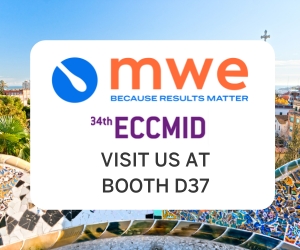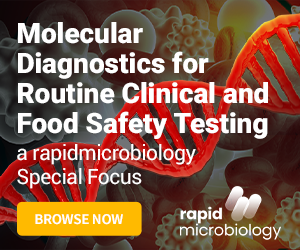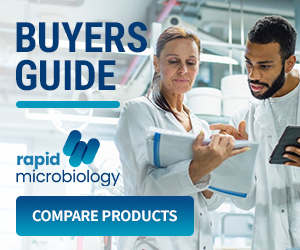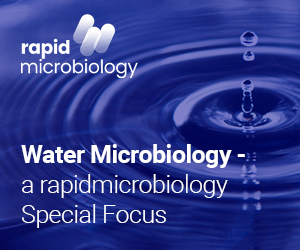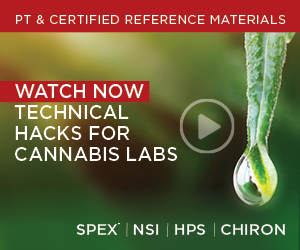Sampling and Testing Sterile Products
- Microbiological testing of sterile products in the pharmaceutical industry remains a regulatory requirement, despite the limitations of sterility tests. “Absence of evidence does not equal evidence of absence.”
- Sampling of sterile products must be representative and must not allow any opportunities for accidental contamination and false positive results.
- Compendial sterility test methods require 14-day incubation times, but rapid methods have the potential to reduce that to five days or less.
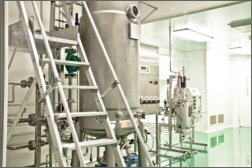 The term ‘microbiologically sterile’ is an absolute, meaning a complete absence of viable microorganisms. Unfortunately, for all practical purposes it is impossible to be certain that a given product is sterile without testing, and therefore destroying, all of it. Since such an approach would be of little value in a manufacturing environment, it is ‘sterility assurance’ that is the important concept for industry. Sterility assurance is a probabilistic function, and refers to the probability of an item containing viable microorganisms after the application of a validated sterilisation process. If that probability can be reduced to a sufficiently low level, the product can be referred to as sterile.
The term ‘microbiologically sterile’ is an absolute, meaning a complete absence of viable microorganisms. Unfortunately, for all practical purposes it is impossible to be certain that a given product is sterile without testing, and therefore destroying, all of it. Since such an approach would be of little value in a manufacturing environment, it is ‘sterility assurance’ that is the important concept for industry. Sterility assurance is a probabilistic function, and refers to the probability of an item containing viable microorganisms after the application of a validated sterilisation process. If that probability can be reduced to a sufficiently low level, the product can be referred to as sterile.
Sterilisation processes are applied to products in a number of industries, including food and beverage manufacture, but it is mainly in the pharmaceutical and medical sectors where the sampling of sterile products for testing remains an important routine task for microbiologists. Sterility assurance is critical in the manufacture of many drugs and other medicinal products and is closely regulated worldwide. Products carrying a claim of sterility typically require some form of sterility test to be carried out before release in order to verify that claim. Ideally, a sterilisation process (e.g. heat, or ionising radiation) would be applied to the product in the final container at the end of the manufacturing process. Such terminal sterilisation can give sterility assurance levels of 10-6 (one non-sterile unit in a lot of one million) or better. However, some products contain heat-, or radiation-sensitive components, which cannot be terminally sterilised in pack. These products may need to be sterilised by filtration, then filled aseptically. Sterility assurance levels for such products are necessarily lower.
While sterility testing may be required or recommended by regulations governing the pharmaceutical industry, it plays a relatively minor role in sterility assurance. By far the greatest contribution to sterility comes from the validation and control of the sterilisation process, and/or of aseptic processing procedures. Sterility testing is only capable of detecting relatively high levels of contamination in a given lot of product. For example, suppose a 10,000-unit lot with a contamination level of 0.1% were sterility tested by sampling 20 units. There is a 98% probability that the contamination would not be detected and that the lot would be passed as sterile. These limitations have lead to the almost complete abandonment of sterility testing in industries other than pharmaceuticals. The canning of food products, for instance, requires a very high level of sterility assurance, which is achieved entirely by validation and control of the sterilisation process, and by careful control of other processing factors post sterilisation. Nevertheless, the sterility test remains an important tool for pharmaceutical microbiology laboratories to determine conformance where there is a claim that a product is sterile.
Sampling
In view of the limitations of sterility testing it is crucial that a ‘representative sample’ of the product is tested. What constitutes a representative sample depends on a variety of factors, but it must be based on rational criteria, such as random sampling procedures, so that the sample accurately reflects the material to be tested.
Where sterility testing is carried out for quality control purposes as a pre-release test there is guidance on the minimum number of samples that should be tested in the largely harmonised compendial test methods published in pharmacopoeias (USP Chapter 71, EP 2.6.1 & JP 4.06). These provide guidance on the minimum number of units to be tested for different types of products and for different batch sizes and also the minimum quantity of product from each unit that should be sampled. It is important to note that the guidance covers only the minimum sampling rate required. In practice, the number of samples tested may be determined by other factors, such as the desired sterility assurance level (the acceptable contamination rate) for the product. The sampling plan also needs to take into account the nature of the sterilisation process. For example, a sampling plan for a product that is subject to an aseptic filling process should include samples from the beginning, middle and end of each fill and should also include samples taken after significant process interventions. Whereas, for a product terminally sterilised by heat, the sampling plan should ensure that samples are taken from the coolest part of the load.
Sterility testing may also be carried out for quality assurance purposes as a means of continuously monitoring the process, rather than as a pre-release test. The development of a statistically valid sampling plan is equally important, since it must be able to detect any deviations from the acceptable contamination rate. Compendial sterility test methods do not usually contain guidance for the development of this type of sampling plan, but the statistical principles involved are well documented. The key is to decide exactly what the sampling plan should be able to detect and then design a plan that will achieve the desired detection level while taking into account any other relevant characteristics of the manufacturing and sterilisation processes.
Sterility testing methods
Compendial methods for sterility testing of pharmaceutical products are based on culturing any viable microorganisms in the sample, but there are important considerations with regard to the laboratory environment.
It is absolutely vital that the possibility of accidental contamination being introduced during testing is minimised. False positive results inevitably mean that the batch or lot under test will be condemned as non-sterile. Re-testing is not a practical option, since the chances of detecting low level contamination are even less once a contaminated unit has been removed from the lot. For this reason the testing laboratory must be able to provide a level of contamination control at least equivalent to that of an aseptic filling facility. This usually means an ISO Class 5 cleanroom, or an isolator to provide a barrier between the laboratory environment and the product. The use of isolators for aseptic operations, including sterility testing, is reported to be growing in the pharmaceutical industry.
Compendial methods for sterility testing require that a sample be cultured using two separate media. These are usually fluid thioglycollate medium (FTM), to culture both anaerobic and some aerobic bacteria, and soybean casein digest medium (SCDM) to culture fungi and aerobic bacteria. The cultures are incubated for 14 days at 32.5oC and 22.5oC and then examined. Any turbidity in the culture may indicate growth and must be investigated.
There are two recommended methods for carrying out the test. The first is by direct inoculation, whereby a small volume of sample is removed aseptically from the sample unit and inoculated directly into a suitable volume of growth medium prior to incubation. This method has some significant disadvantages. Firstly, only small volumes of product can be inoculated into the culture medium, limiting the sensitivity of the test. Secondly, if the sample appears milky or turbid, it can be very difficult to detect turbidity caused by microbial growth at the end of the incubation period.
To overcome these drawbacks the recommended method wherever possible is membrane filtration. Here the sample is passed through a 0.45 µm membrane filter and the filter is then transferred to the culture medium for incubation. Membrane filtration allows the whole sample, or a composite sample, to be passed through a single filter and is therefore potentially much more sensitive than direct inoculation. Filtration also provides an opportunity to rinse away components in the sample that may cause turbidity and any growth inhibitors, such as antibiotics or preservatives, which may be present.
The membrane filtration method may be carried out using a traditional ‘open’ filtration system, or by using one of the commercially available closed systems, where the sample is never exposed to the test environment, thus minimising the opportunities for contamination and false positive results. A widely used example of a closed membrane filtration system is the Millipore Steritest filtration unit, which includes connection devices and tubing so that samples can be withdrawn aseptically from ampoules, collapsible bags and other containers without being exposed to the external environment. The sample is then pumped through two individual filter canisters each containing a 47 mm, 0.45 µm membrane filter. Once filtration is complete each canister is filled with 100 ml of medium (FTM and SCDM) and incubated. A range of filters is available to suit products with different characteristics and the canisters are colour coded. The system can also be used to sterility test medical devices.
Whichever method is used, it must be properly validated for the product being tested to ensure that it does not increase the probability of recording a false negative result. A number of different test microorganisms, including Staphylococcus aureus, Bacillus subtilis, Pseudomonas aeruginosa, Clostridium sporogenes and Candia albicans, should be used to demonstrate that the method is able to detect the required range of organisms.
Rapid Methods for Sterility Testing
Current compendial methods for sterility testing in the pharmaceutical industry remain culture-based and include an incubation period of 14 days. Clearly, this is a delay that is becoming less and less acceptable in a modern manufacturing operation. However, there are signs that the situation is changing. For example, initiatives such as ‘Process Analytical Technology’ (PAT) and parametric product release are challenging the need for sterility tests to be completed before product can be released and both the FDA and the EMEA are encouraging the adoption of new analytical technologies to help ensure final product quality. In the USA the FDA Center for Biologics Evaluation and Research (CBER) is proposing radical changes to the sterility test requirements for biological products, though not so far for all pharmaceuticals, promoting the use of rapid microbiological methods (RMM) as alternatives to the compendial sterility test methods. Such changes in the regulatory climate are creating renewed interest in RMM for sterility testing and several technologies are already available commercially.
ATP-bioluminescence Adenosine triphosphate (ATP) bioluminescence is a well established rapid method utilising a specific substrate and enzyme combination, luciferin/luciferase, to break down microbial ATP from growing cells and produce visible light, which can be measured using a luminometer. Several commercial systems have been developed for a range of pharmaceutical test applications, including sterility testing, especially for filterable samples where non-microbial ATP in the sample is less of a concern. The test time can be reduced considerably because detection of microbial growth in culture media is accomplished by ATP-bioluminescence, rather than by visible turbidity. Typically, results equivalent to those of compendial tests are available within 7 days or less. An example is the Celsis Rapid Detection System, combining the company’s Advance luminometer and AMPiScreen™ ATP-bioluminescence assay reagents, which use proprietary enzyme technology to increase the quantity of microbial ATP produced and reduce detection times by 25-50%.
The Milliflex® Rapid Microbiology Detection and Enumeration system from Millipore also uses ATP-bioluminescence to detect microbial cells and is designed specifically for monitoring microbial contamination in filterable samples. It is automated, employing image analysis technology to detect microcolonies growing directly on the surface of a membrane filter after the addition of bioluminescence reagents. The system is designed to be quantitative, but a method has been developed and validated to use it for a rapid sterility test with an incubation time of just five days.
Colorimetric growth detection Colorimetric growth detection methods rely on a colour change being produced in a growth medium as a result of microbial metabolism during growth, often as a result of CO2 production. The best example of a commercial colorimetric assay system, which can be used for sterility testing is the BacT/ALERT® 3D Dual-T Microbial Detection System from bioMerieux. The system is automated and employs sensitive colour detection and analysis technology to produce a result in as little as three days. It can detect both aerobic and anaerobic bacteria, as well as yeasts and moulds.
Autofluorescence detection All living cells produce a small amount of fluorescence (autofluorescence) and this can be used to detect microbial colonies growing on a solid surface long before they are visible to the naked eye. This technique is particularly useful for filterable samples, where a membrane filter can be incubated on a conventional nutrient medium and scanned using highly sensitive imaging systems to detect microcolonies, sometimes several days earlier than using traditional colony counting methods.
Autofluorescence detection has been commercialised by Rapid Micro Biosystems as Growth Direct™, which uses a large area CCD imaging system without magnification to detect developing microcolonies. Although not yet validated for testing sterile products, “proof of concept” has been establish can be used for sterility testing is the BacT/ALERT® 3D Dual-T Microbial Detection System from bioMerieux. The system is automated and employs sensitive colour detection and analysis technology to produce a result in as little as three days. It can detect both aerobic and anaerobic bacteria, as well as yeasts and moulds.
Cytometry systems Cytometry does not rely on microbial growth to detect contamination, but instead uses cell labelling techniques to detect viable microorganisms. This approach has the potential to detect a wide range of organisms, including yeasts and moulds, within minutes. Commercial systems utilise combined fluorescent cell labelling and flow cytometry or solid phase cytometry to detect viable microbial cells. Typically, the cells are labelled using a fluorescent dye or a non-fluorescent substrate, which is converted to a fluorochrome in viable cells. Detection of the labelled cells occurs by laser scanning in either a flow cell (flow cytometry), or on a solid phase platform such as a membrane filter (solid phase cytometry). AES Chemunex has developed solid phase cytometry detection systems. The company’s Scan®RDI (also known as ChemScan RDI) system is capable of detecting 1 CFU per sample and has been evaluated as a possible RMM for sterility testing. The technology has been developed for the Stereal®-T sterility testing system.
Get the latest updates in Rapid Microbiological Test Methods sent to your email? Subscribe to the free rapidmicrobiology eNewsletter



